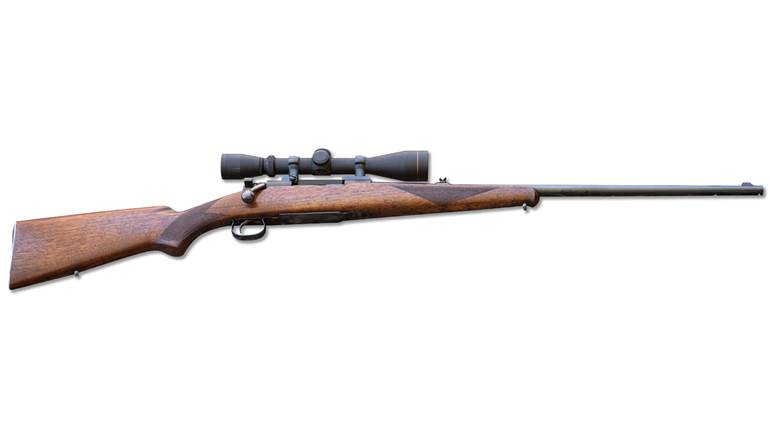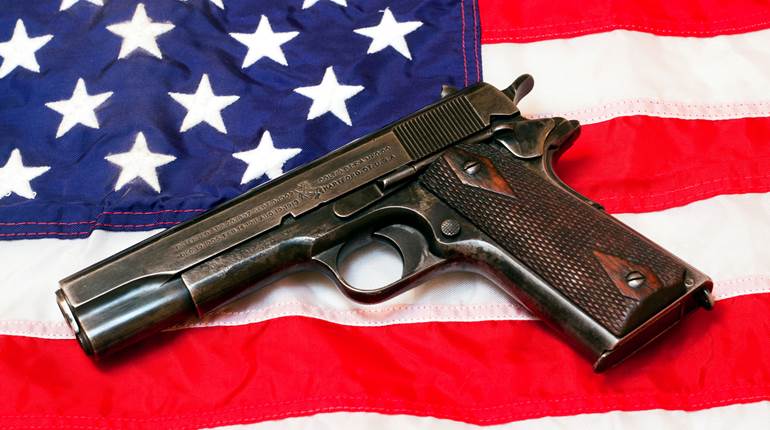
My grandfather, a civil engineer for the Russian Tsarist government, obtained this Iver Johnson Safety Automatic .32-cal. blackpowder revolver sometime in the early 1900s on one of his trips to Finland or Britain. After the Bolshevik Revolution, he, as manager of a workers’ manufactory in St. Petersburg, found that he could not raise wages fast enough to keep up with the price of bread. This and other risks led him to send his family, including my father, on vacation via the Trans-Siberian Railway to Vladivostok.
He followed three weeks later on a “bridge-inspection tour,” with this pistol sewn into the crotch of his trousers for personal protection. Because of its single latch on the left of the top bar, it should be a first model, but it has the trigger safety of the second model.
The patent date on the pistol is April 1886. The shrouded hammer with transfer bar, along with the automatic ejection of its five rounds, make its use as a concealed firearm obvious. My father made the larger grip sometime in the 1940s or 1950s, but I do not know if he ever fired it, since blackpowder cartridges may have been less available then, and the pistol is not considered safe with smokeless powders.
Grandpa’s gun traveled with the family from Siberia, through China, then to Indonesia for a few years before coming by tramp steamer to San Francisco and ending up, decades later, in his closet in Texas. I learned the bare bones of its history from my mother, as neither my father nor grandpa would talk about their escape in my youth. Well-traveled and worn, this Iver Johnson Safety Automatic is proudly displayed in my study.























![Winchester Comm[94]](/media/1mleusmd/winchester-comm-94.jpg?anchor=center&mode=crop&width=770&height=430&rnd=134090756537800000&quality=60)
![Winchester Comm[94]](/media/1mleusmd/winchester-comm-94.jpg?anchor=center&mode=crop&width=150&height=150&rnd=134090756537800000&quality=60)












